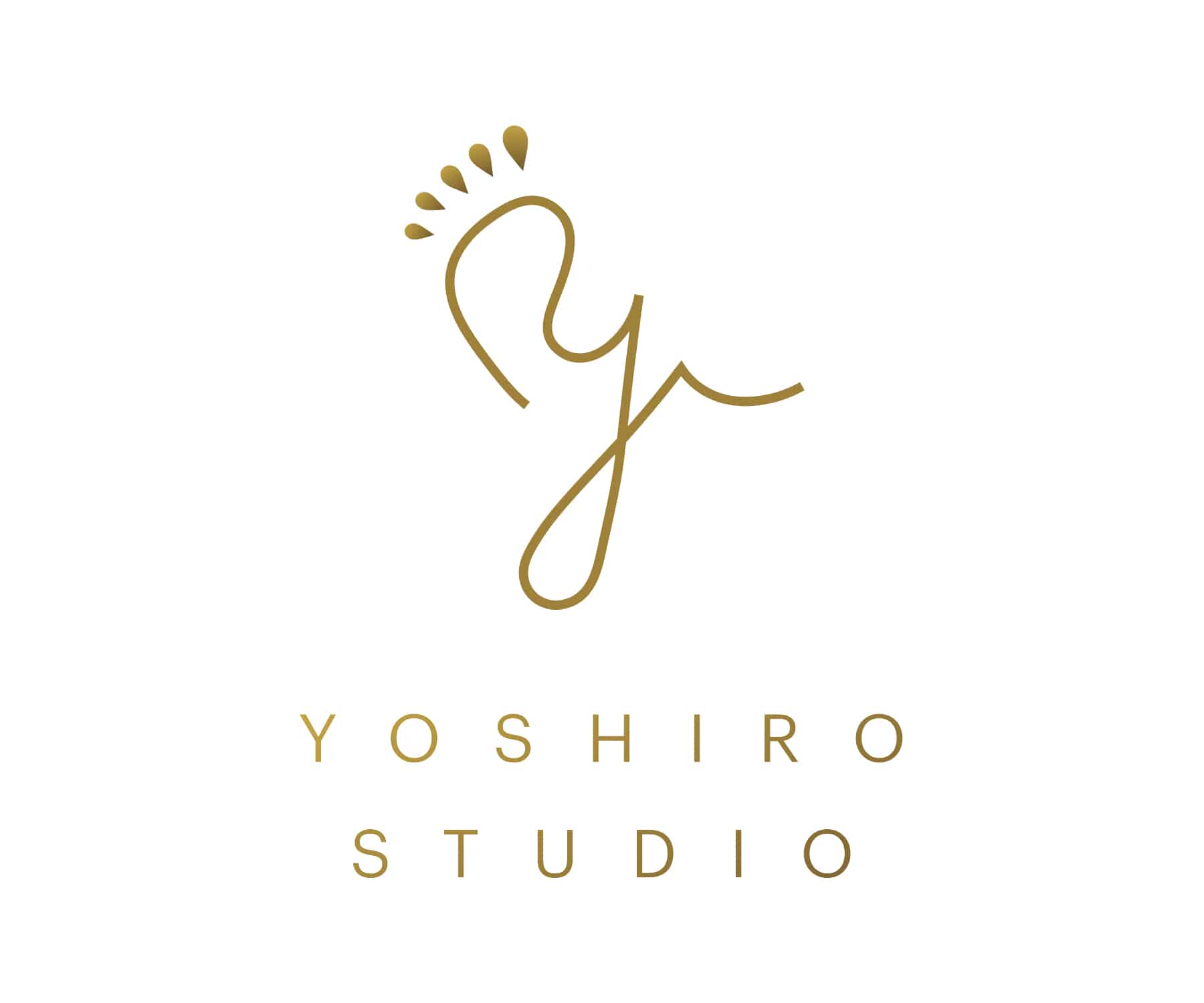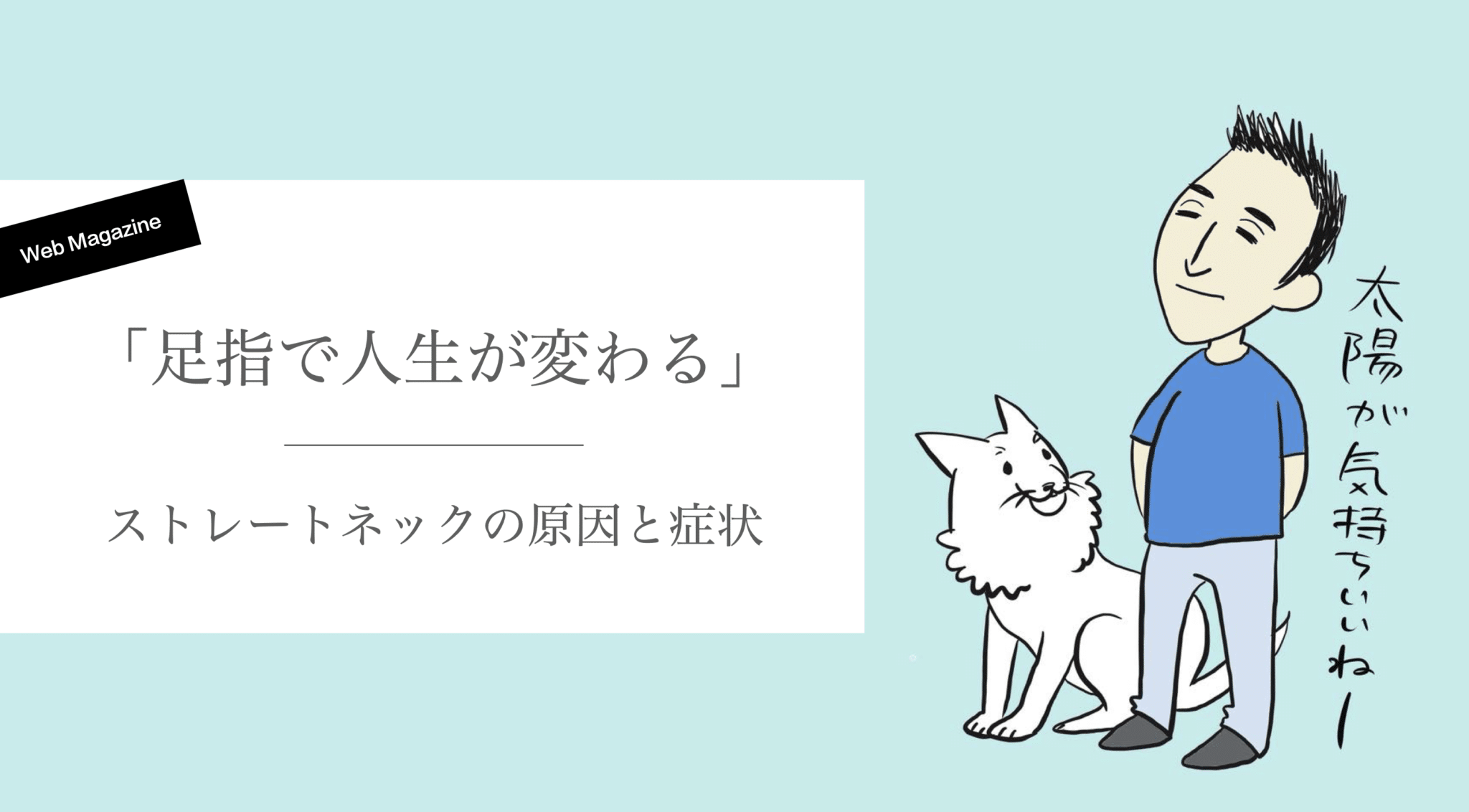足指ドクターによる解説
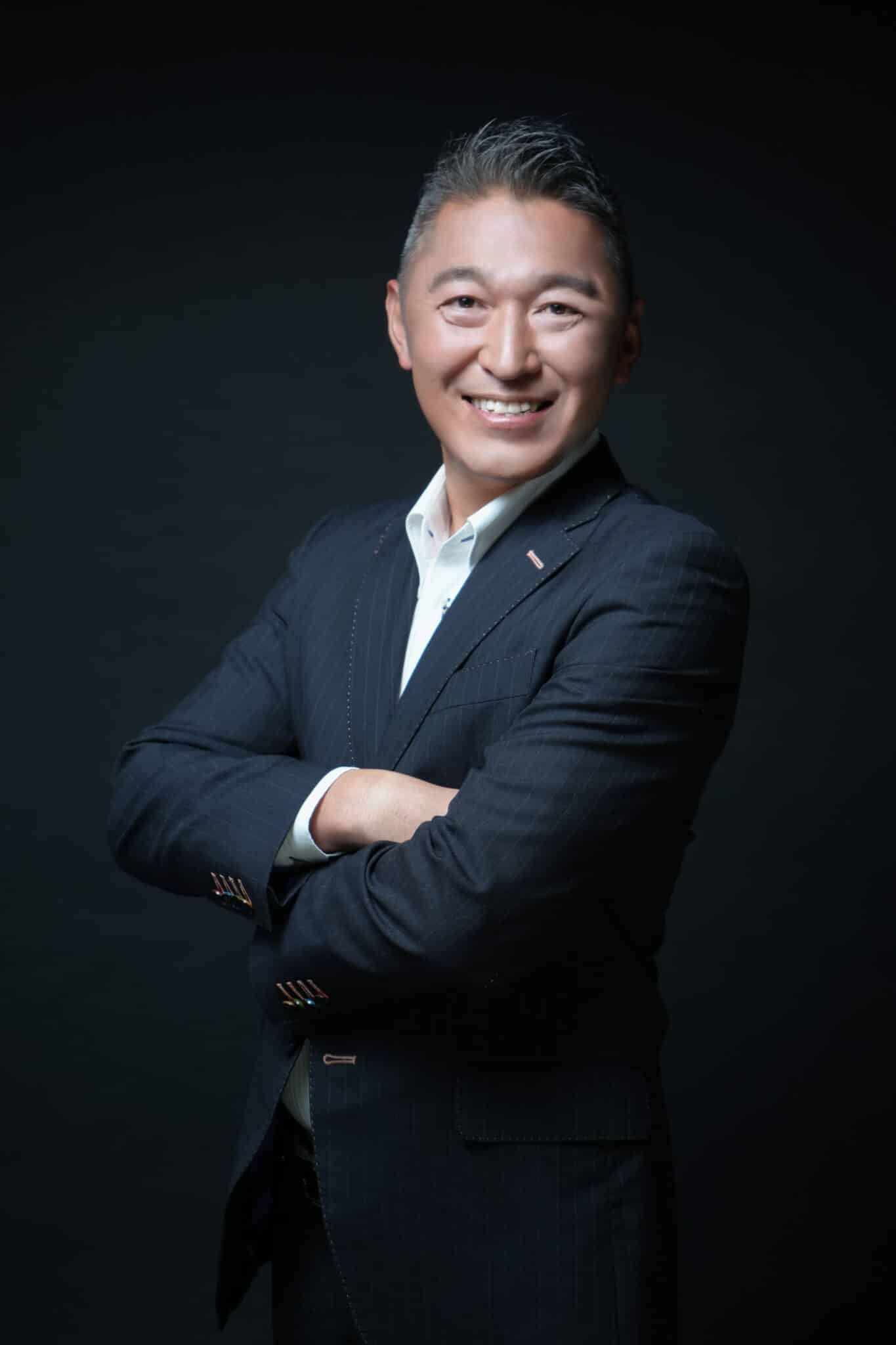
YOSHIRO YUASA
湯浅慶朗
理学療法士(Physiotherapist)、足指博士、足指研究所所長、日本足趾筋機能療法学会理事長、ひろのば体操・YOSHIRO SOCKS・ハルメク靴開発者。元医療法人社団一般病院理事・副院長・診療部長。専門は運動生理学と解剖学。足と靴の専門家でもあり、姿勢咬合治療の第一人者でもある。様々な整形疾患の方(10万人以上)を足指治療だけで治してきた実績を持つ。東京大学 石井直方 名誉教授の弟子でもある。
はじめに
スマホやパソコンの長時間使用などによって姿勢が悪くなり、「ストレートネック(スマホ首)」になる。巷ではそのような記事を数多く見かけます。確かに否定はできませんが、それが主な原因ではありません。そのため、ストレッチや姿勢の見直し、筋トレや自分に合った机と椅子を選んでも改善しなかったという人も多いのではないでしょうか?
今回は「どうして足ゆびがストレートネックの原因なのか」、予防・改善・ストレッチ方法をご紹介したいと思います。ストレートネックにコンプレックスを持っている方もいると思います。2週間ほどで改善した方もいるので、ぜひ参考にしてみてください。
概要
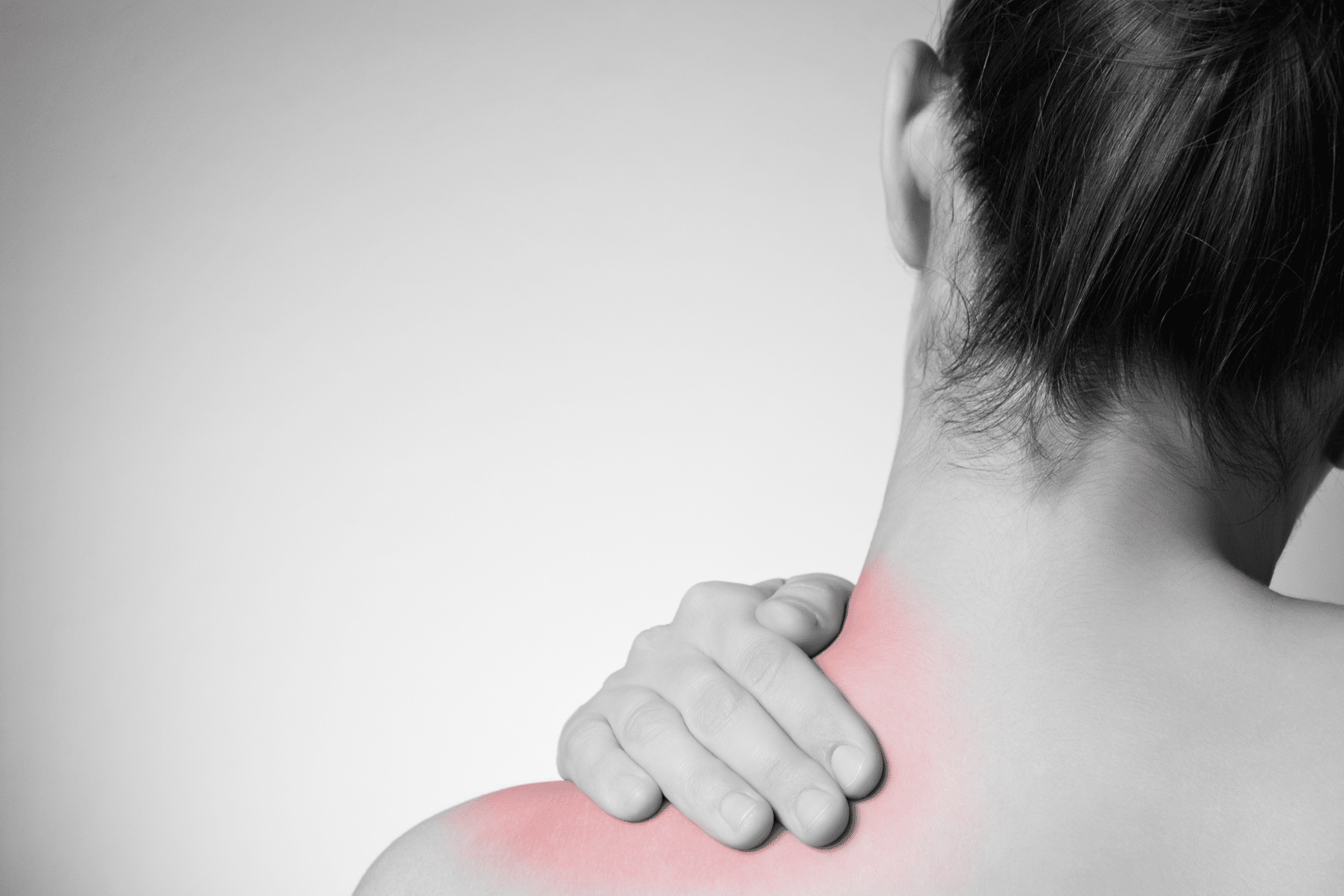
スマホ首としても知られるストレートネックは、正常な首の骨(頚椎)のカーブを失った状態のことです。私たちの頚椎は前弯(ぜんわん)していて、通常は30 度~40 度のアーチ状にカーブしており、頭の重量を均等に分散し、首が衝撃や応力を効果的に吸収できるようにするために不可欠なものです。
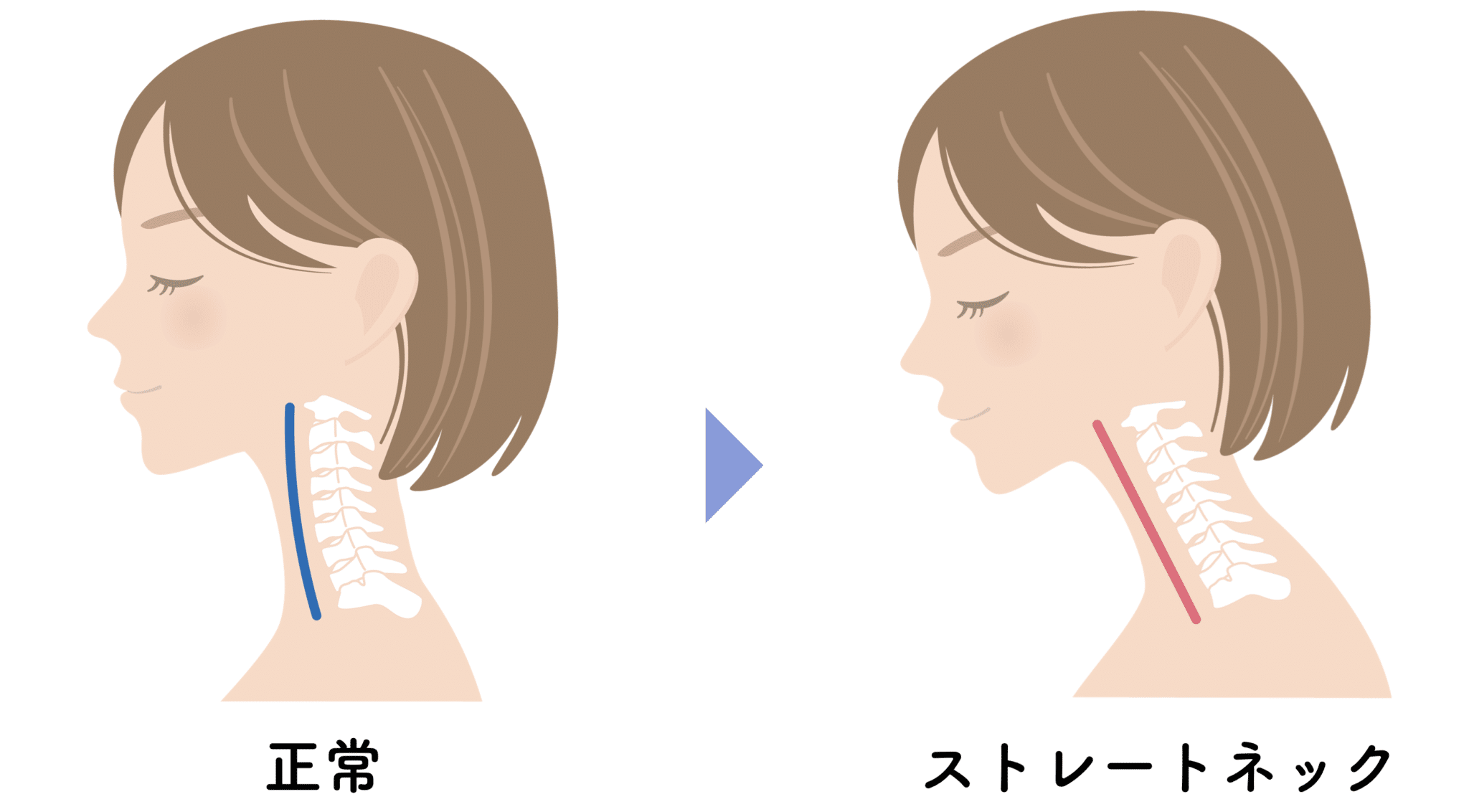
ストレートネックの人は、横から見ると首が緩やかな曲線ではなく、まっすぐになっています。一般的にスマートフォン・パソコンなどを長時間使用する時に、頭が前に出たりうつむき姿勢が主な原因と言われていますが、実はそうではありません。
ストレートネックを引き起こす主な要因としては、足指変形・足指機能不全、間違った靴選び、間違った靴の履き方、靴下の種類と素材です。それらの要因で日頃の姿勢が悪くなり、近年、多くの世代で見られるようになりました。
症状
首すじ、首のつけ根から、肩または背中にかけて、張っている感じや痛みなどが出ます。動悸・息切れ・頭痛・めまい・吐き気・集中力低下・耳鳴り・目の疲れ・倦怠感・肩や腕、指先にまで痛みやしびれが出てくることがあります。肩こりや首こりが進むと、肩甲骨から背中にかけても、一枚の鉄板を貼っているような硬さを感じるようになります。これは前回お話しした「肩こり」と同じです。
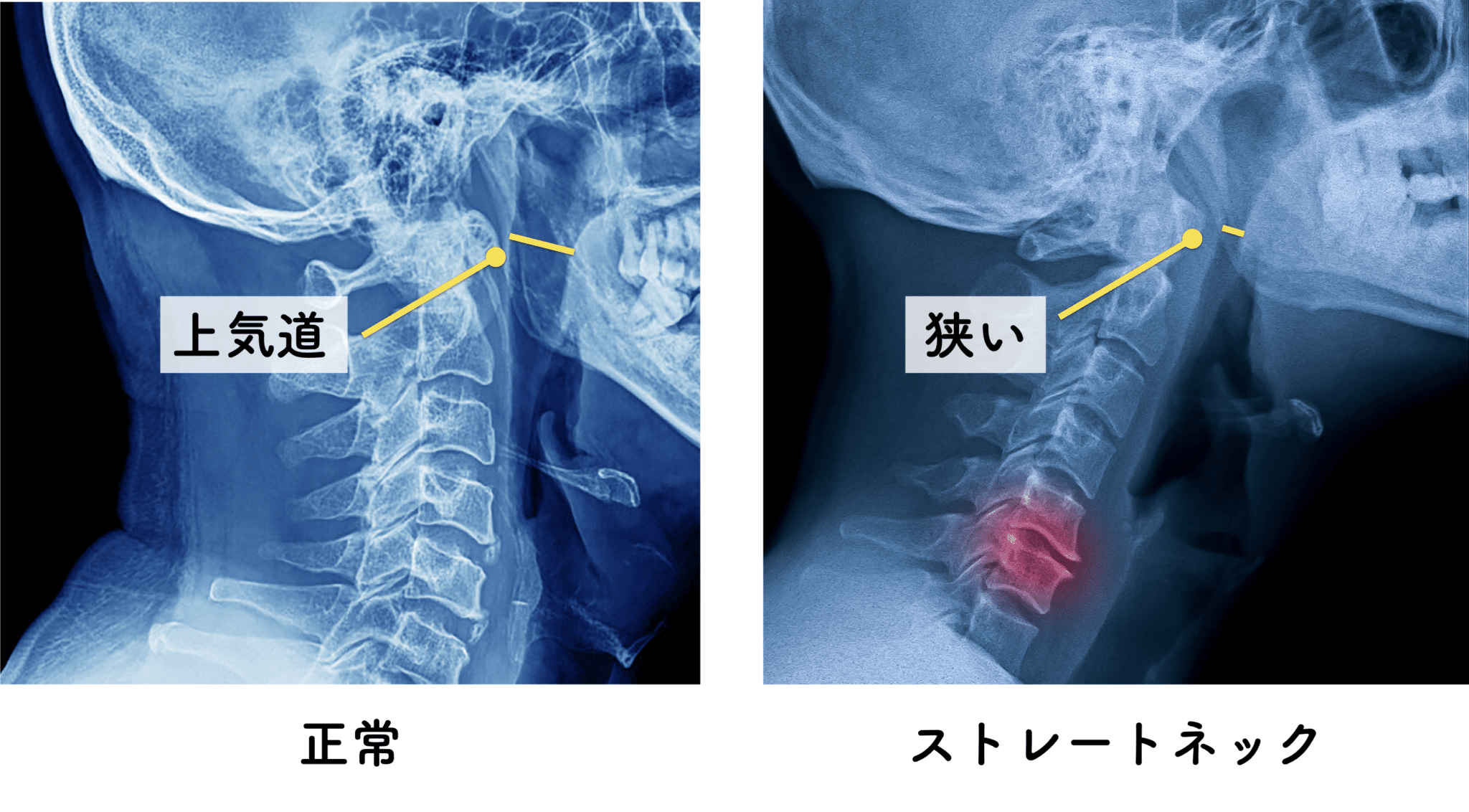
ストレートネックになるとさらに重篤な症状が起こることがあります。ストレートネックによって気道(呼吸をするときの空気の通り道)が狭くなると、全身への酸素供給料が18%減少し、脳をはじめ多くの身体器官、細胞の活動が低下するため、全身疲労、倦怠感、集中力の低下、判断力の低下、無気力、認知機能の低下などを引き起こすので注意が必要です。
・顎関節症
・口呼吸
・低位舌(滑舌が悪くなる)
・気道狭窄(気道が狭くなる)
・ブルあご(ブルドッグ顔)
・噛み合わせが悪くなる
・口唇閉鎖力(口を閉じる力)の低下
・脳血流量の低下
・全身倦怠感
・睡眠時無呼吸症候群
原因・発症のメカニズム
発生要因
90%以上の方は不良姿勢による問題です。背骨は、首から背中、腰と骨盤、脚と足につながっていて、緩やかなS字カーブを描いています。このS字カーブは、身体を上下に動かすときに背骨にかかる負担を和らげるサスペンションとして働いてます。さらには、このS字カーブの真上に頭を置くことで、重たい頭を支えるための筋肉の負担も軽減される仕組みになっています。
ところが、足指を使わないままの生活を続けると、足指の変形や機能不全により、腰や背中が丸まり、自然と首が前方に移動、頭を前に突き出した姿勢になります。このときの背中から首にかけての背骨のカーブはまっすぐ、ストレートな状態になります。
パソコンやスマホを見続ける不良姿勢は一時的なもので、一度立ち上がって正しい姿勢に戻せば元の緩やかなカーブに戻り、ストレートネックにはなりません。けれども、靴の種類や靴下の素材などによって靴の中で足が滑り、踵重心のまま歩いていると、本来使うべく正しい筋肉が使えず、間違った筋肉がついていきます。それにより関節や筋肉がそのままの状態で固まっていき、姿勢を戻そうとしても背骨のカーブが真っ直ぐのまま戻らなくなってしまいます。これがストレートネックの大きな原因です。
メカニズム
シンプルに説明すると、①靴の種類・履き方→②足指変形→③踵重心→④猫背(反り腰)→⑤ストレートネック(頭が前に出る)というメカニズムです。
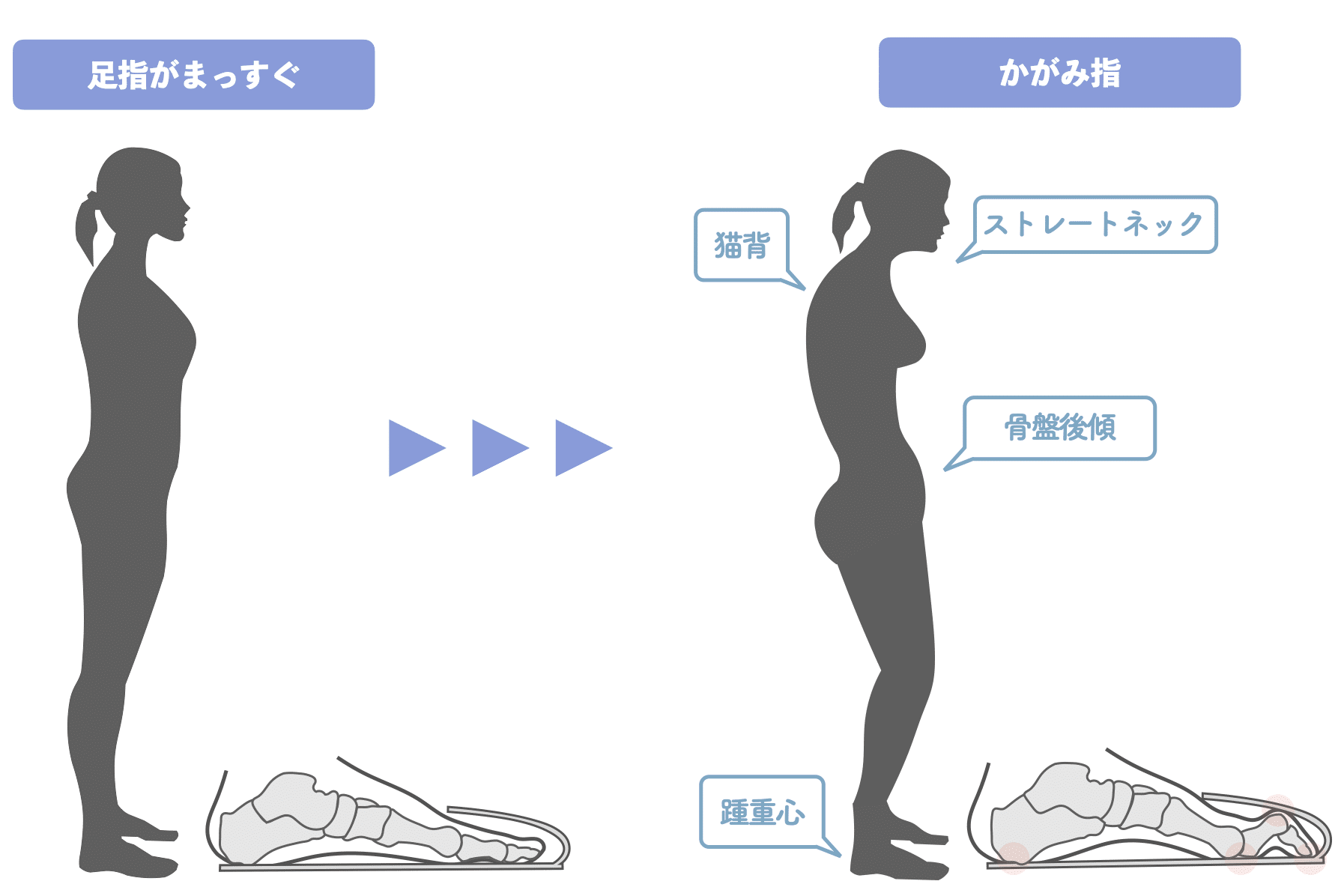
靴の種類や履き方などによって、靴の中で足がすべると、足が滑らないように足指がギュッとブレーキをかけようとするので、かがみ指になります。かがみ指の場合には、歩くときに常にブレーキがかかっている状態になるので、歩いているときに無意識に膝が曲がってしまいます。
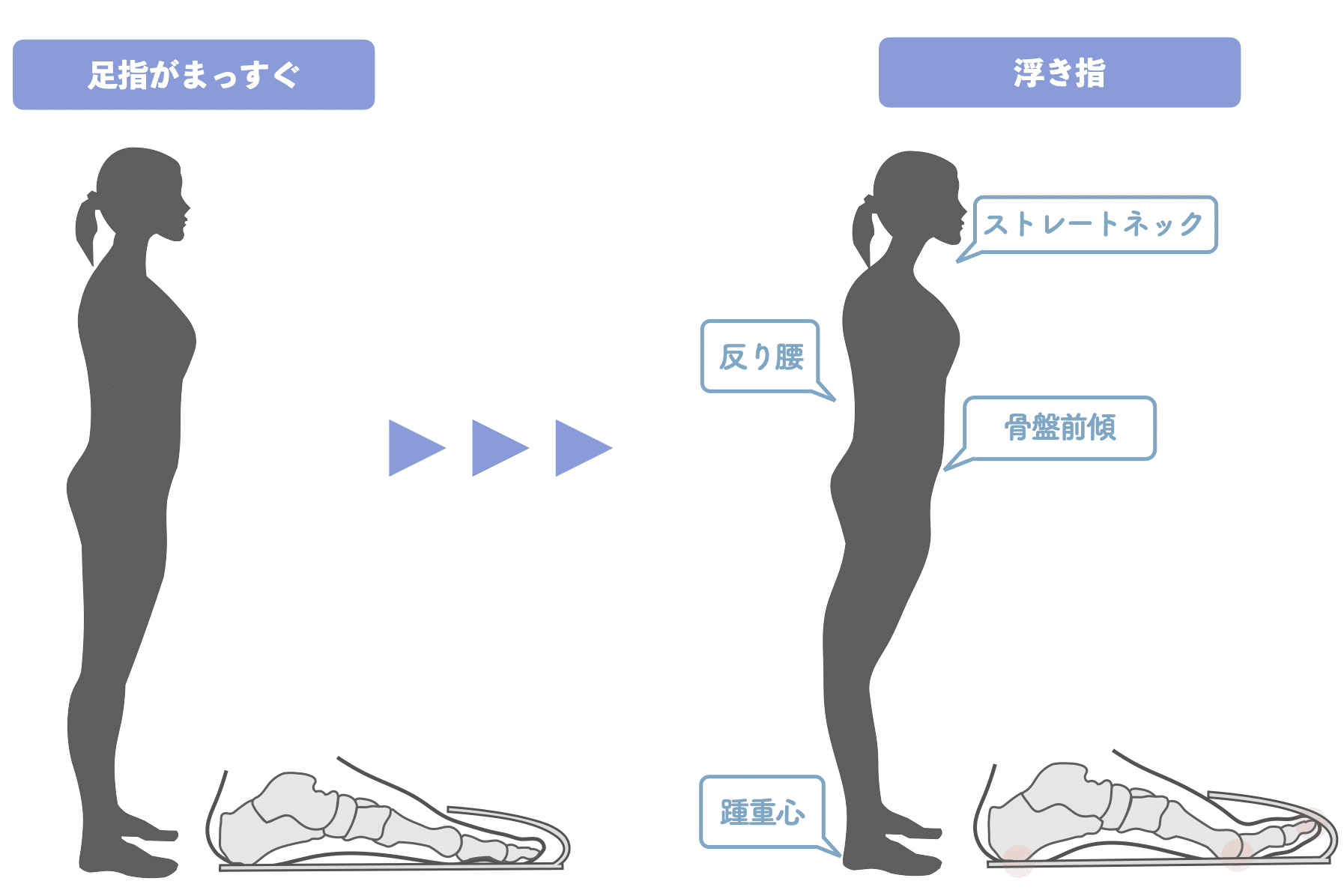
また、スリッパや長靴などに多いのですが、靴の中で足が滑ると、足指を上に浮かせて靴が滑らないようにします。これが浮き指のはじまりです。かがみ指や浮き指になると「かかと重心」になるので、後ろに倒れそうな姿勢を膝を曲げてたり、カラダを前に倒したりしながらバランスを取ろうとします。「姿勢反射(しせいはんしゃ)」とか「姿勢制御(しせいせいぎょ)」とも呼ばれています。
前方や側方への重心移動は足指がストッパーとなって姿勢をまっすぐに保とうとしますが、後方への重心移動に対するストッパー機能は足にはないので、上体の姿勢によってバランスを保とうとするのです。頭を前に出してカラダのバランスを取ろうとするのが頚椎前弯(けいついぜんわん)・ストレートネックと呼ばれるものです。
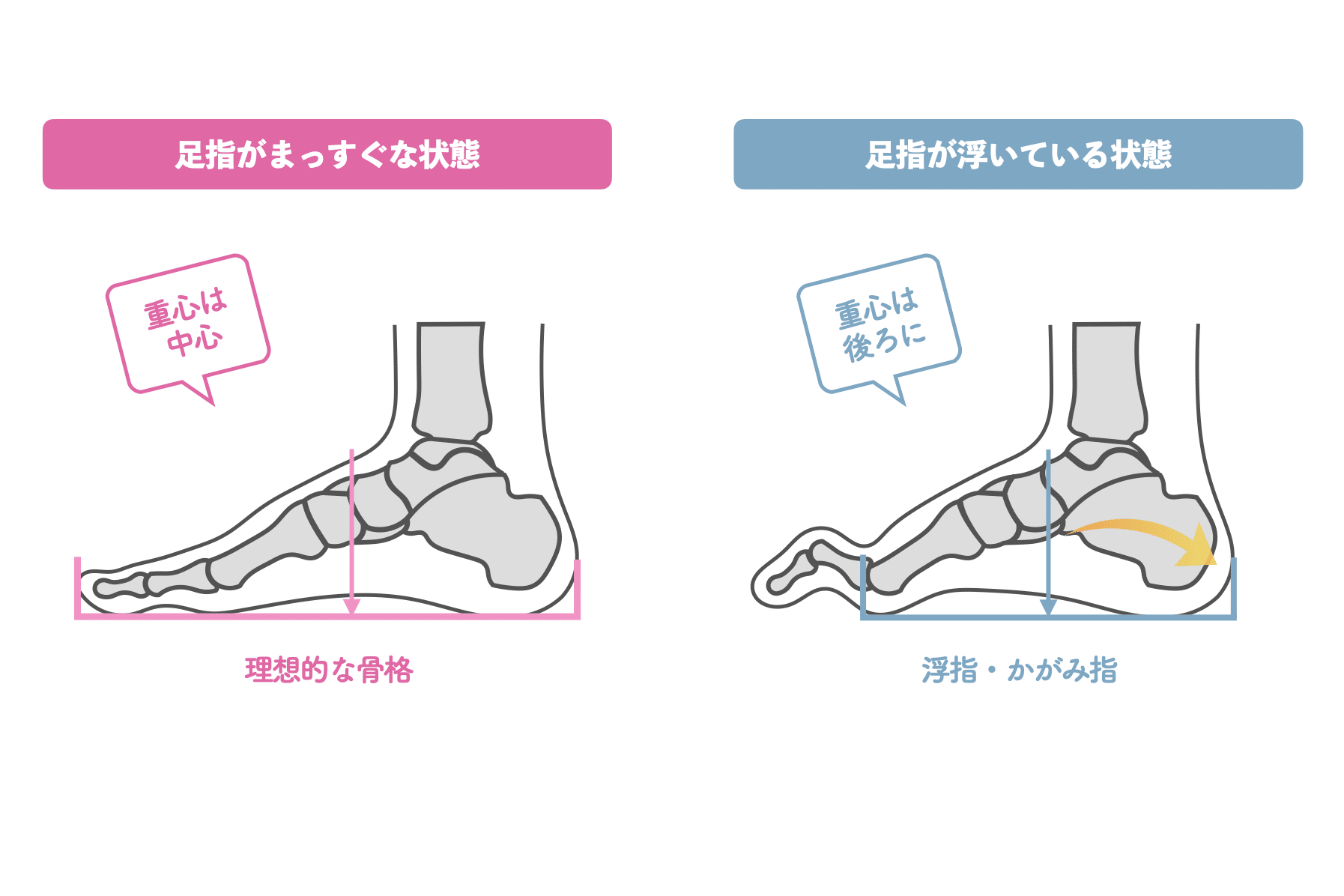
足指がしっかりと広がって伸びていれば、前方に50%・後方に50%の体重がかかる理想的なバランスになります。しかし浮き指やかがみ指になると、地面に接地する面積が少なくなり、かかとに体重が移動します。
足指がしっかり開いて伸びている状態だと、重心の位置は中心になるので、人は真っ直ぐに立つことができます。ところが、ほとんどの人は間違った靴の選び方や履き方、靴下の種類や素材などによって足指が変形し、土台が崩れて重心が後方に移動しています。
後方に重心があるので、無理な姿勢で力を入れながら上体のバランスを取って、立とうとします。それでストレートネックを起こすのです。そう考え得ると、ただすべきは首の部位よりも、支える土台の方だと思いませんか?
足指が変形する原因は?
ストレートネックにはどのように靴を履いているかが大きく影響することがあります。特に以下のような靴を履いている方は要注意です。
・室内でスリッパ・サンダル・草履などを履いている
・紐を緩めにして靴を履いている
・靴底や踵の支え(ヒールカウンター)が柔らかい靴
・クッション性がありすぎる靴
・幅が広い靴
・凹凸(おうとつ)のある中敷(インソール)の靴
・滑りやすい素材(綿やシルク)の靴下を履く
間違った靴選び・すべりやすい素材の靴下などは、靴の中で足が滑り、靴が脱げないように無意識に足指に力を入れ、かがみ指(ハンマートゥ)や浮き指に。この状態が長期間・長時間続くと足指が変形していきます。
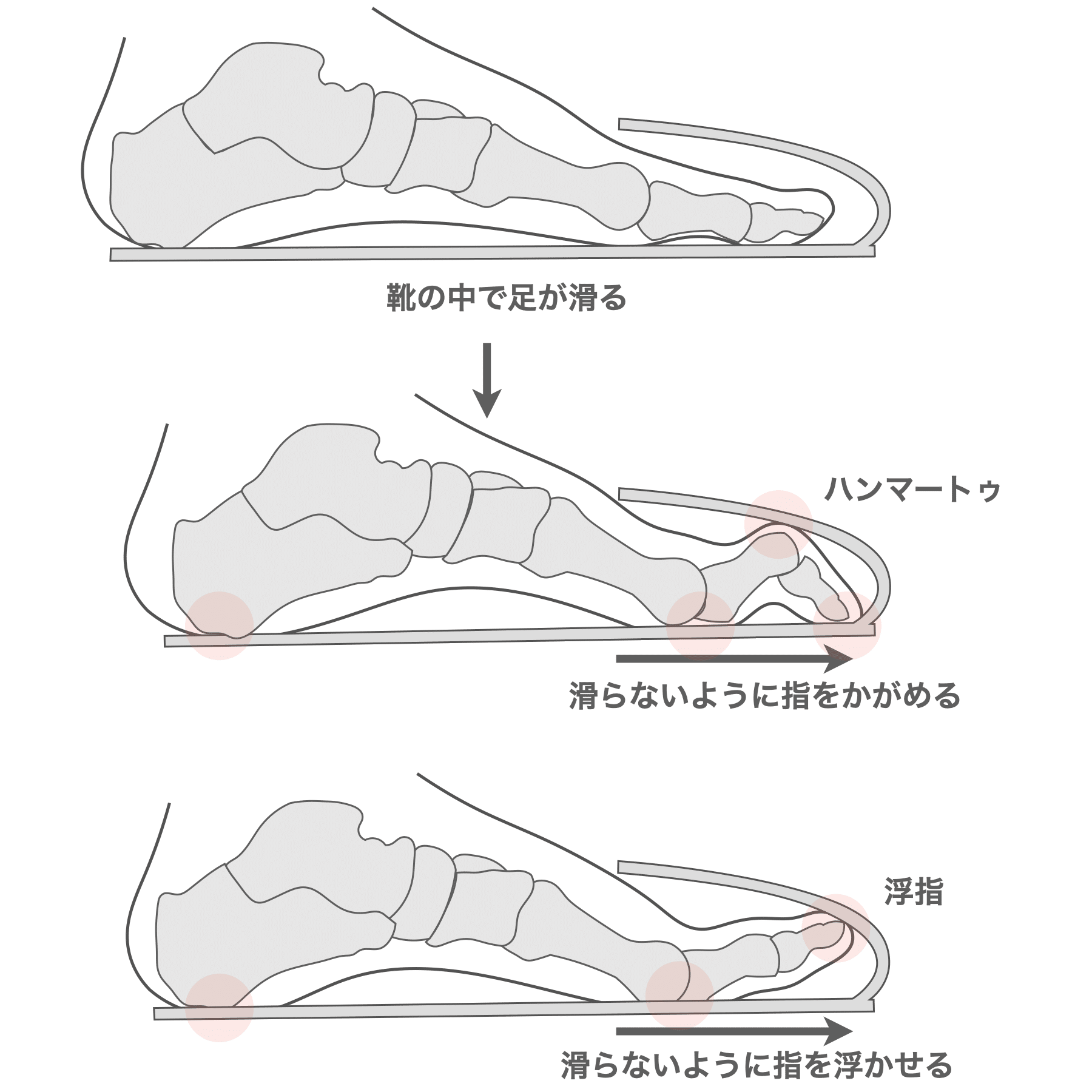
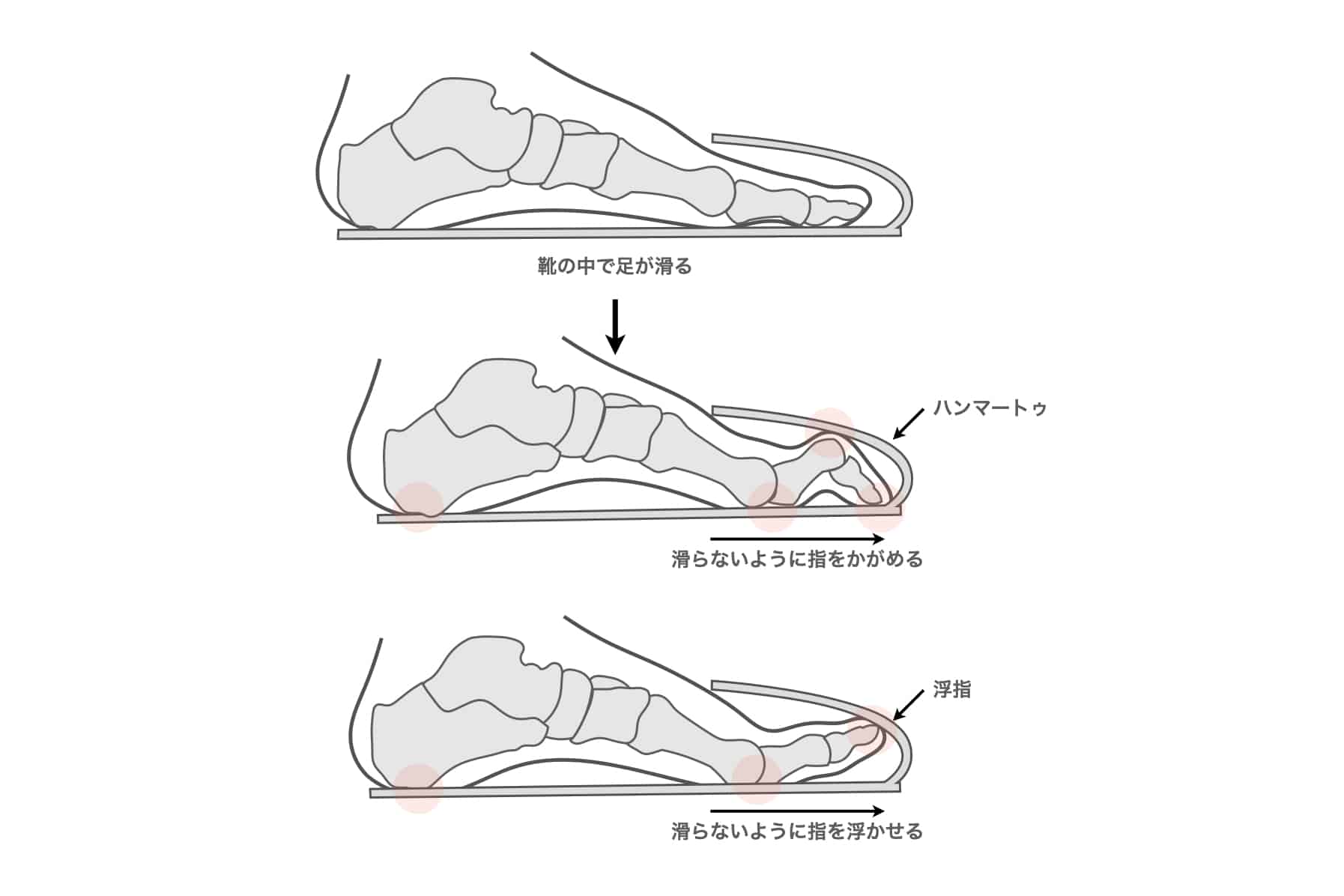
また、足の骨はたくさんの筋肉で支えられてまっすぐな形をしていますが、ほとんどの筋肉が足指に付着しています。そのため、足指を機能的に使わず歩くと、足の筋力が落ちて外反母趾や内反小趾の変形を引き起こします。アーチが崩れることで踵重心となり、さらに猫背などの不良姿勢が助長されてしまうことも医学的にはあまり知られていません。
世界中のほとんどの人が履いている通常の筒型の靴下(チューブソックス)では、足指に4g~9gf/㎠の力がかかり、足指を圧迫していきます。また多くの綿やシルクの靴下にはシルケット加工が施されているので、靴や靴下の中で足が滑りやすくなります。滑りやすく、足指に圧力のかかる靴下は、足指機能不全を引き起こし、かがみ指や浮き指になりやすくなります。逆にブカブカのチューブソックスでは、靴下の中で足がズルズルと滑るので、かがみ指や浮き指になってしまいます。
ストレートネックを解消するためのさまざまな首のストレッチやトレーニングがありますが、ストレートネックをよくするには、「足指」にアプローチして姿勢を正していくことが重要です。病院で行うリハビリ・マッサージ・筋膜リリースなどは一時的にストレートネックが和らぐこともありますが、姿勢や脚の形を作っている「足指」を治療しない限りは、何の意味も持たないことがわかるでしょう。
検査・診断・セルフチェック
問診や神経学的診察、頚椎疾患のチェックなどを行い、X線(レントゲン)撮影のほか、MRI、筋電図、採血検査、心電図などの検査も行います。
正常の頚椎角の診断
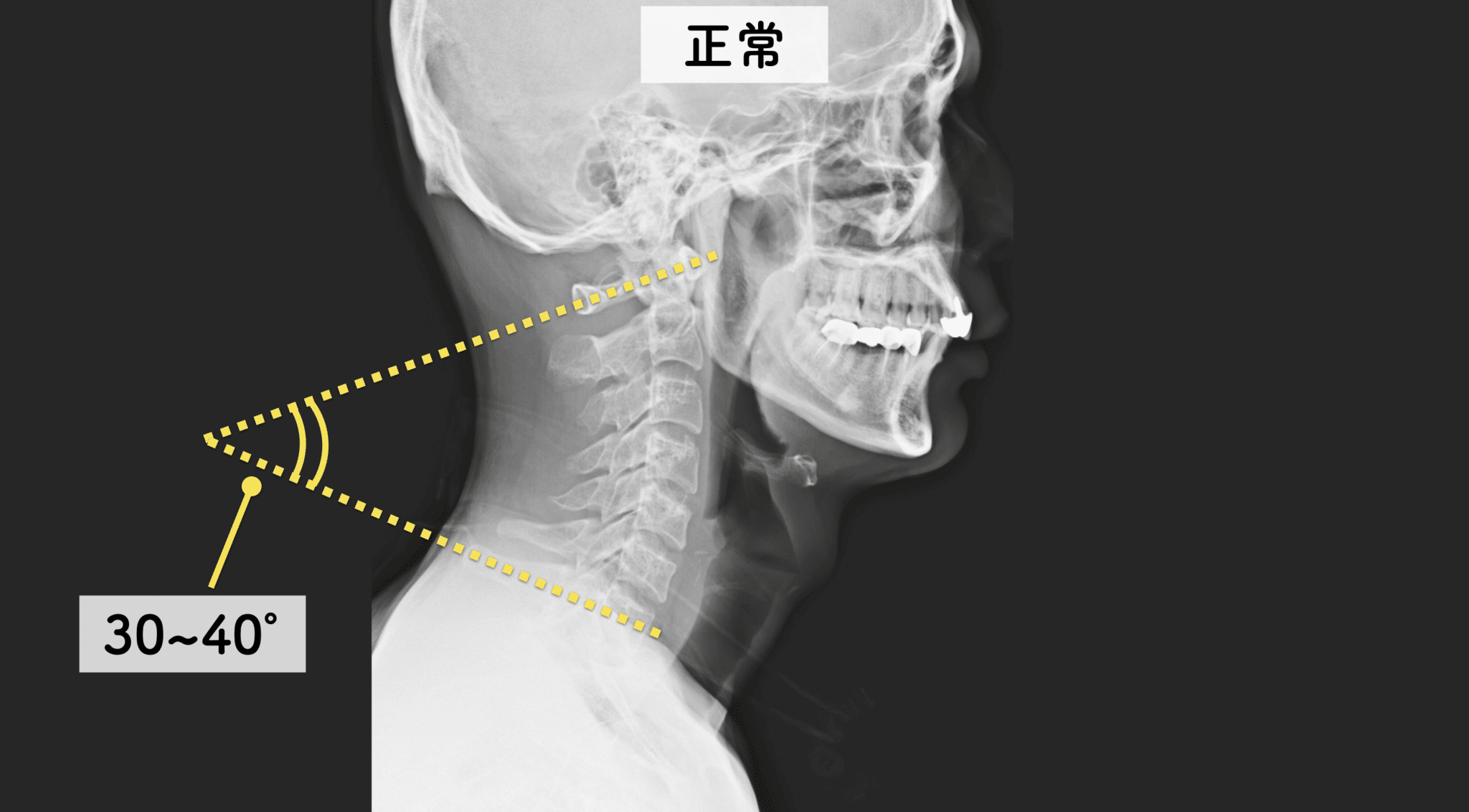
1番目の首の骨の前(環椎前結節)と後ろ(後結節)の中点を通る直線と、 7番目の首の骨の下(椎体下部終板)を通る直線がなす角度が30~40°であれば理想的な頚椎のカーブです。
ストレートネックの頚椎角の診断
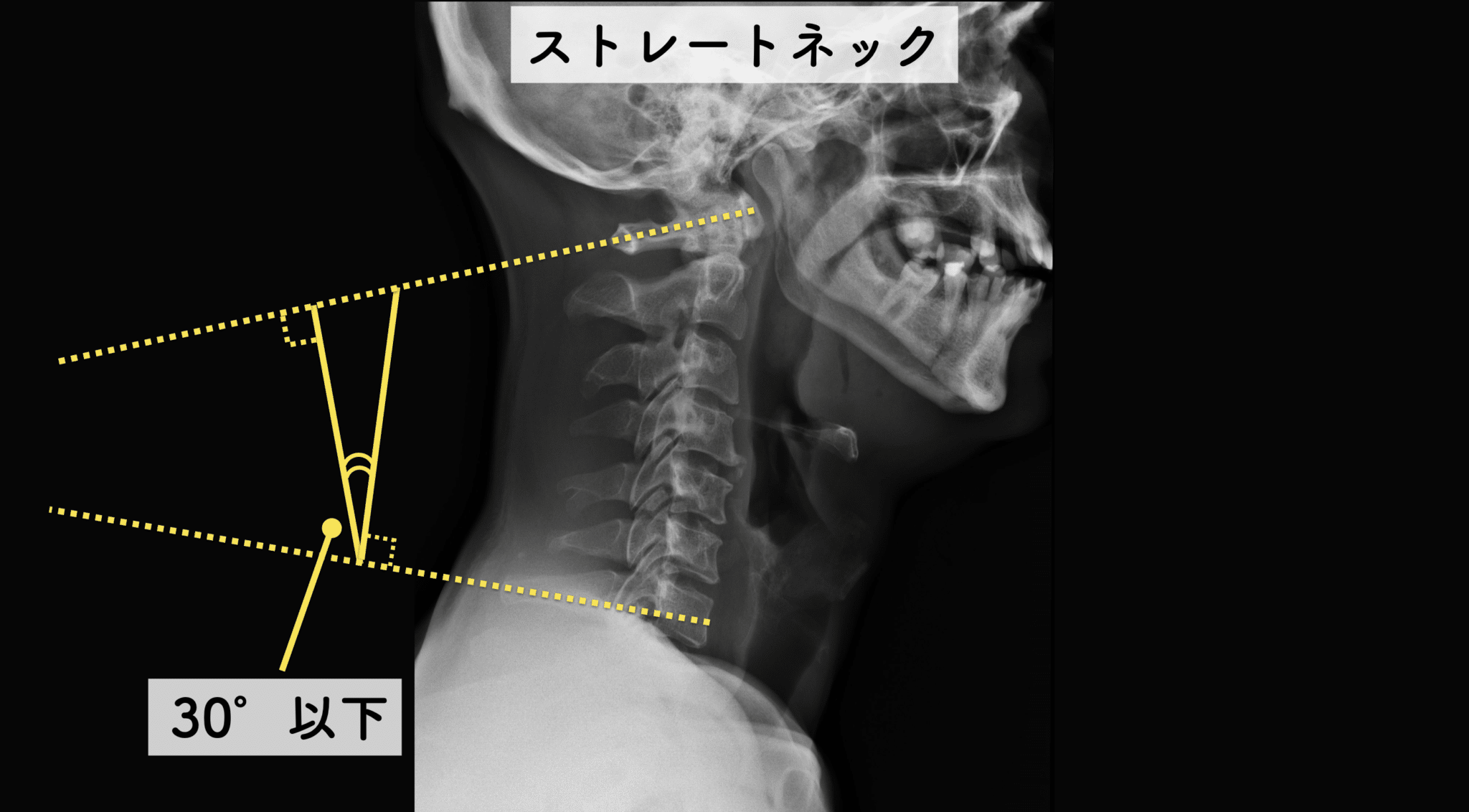
1番目の首の骨の前(環椎前結節)と後ろ(後結節)の中点を通る直線の垂線と、 7番目の首の骨の下(椎体下部終板)を通る直線の垂線がなす角度が30°以下であれば「ストレートネック」です。
この診断にはレントゲン撮影が必要になるので大変だと思います。そこで誰にでもできるチェック方法として、スマホ撮影でできるセルフチェックがありますので参考にしてみてください。
姿勢のセルフチェック
まず、自分の真横からの姿勢をスマホなどで撮影してみましょう。スマホの中心点がカラダの中心にくるように撮影します。水平器の位置がおへその位置にくるようにすると良いでしょう。
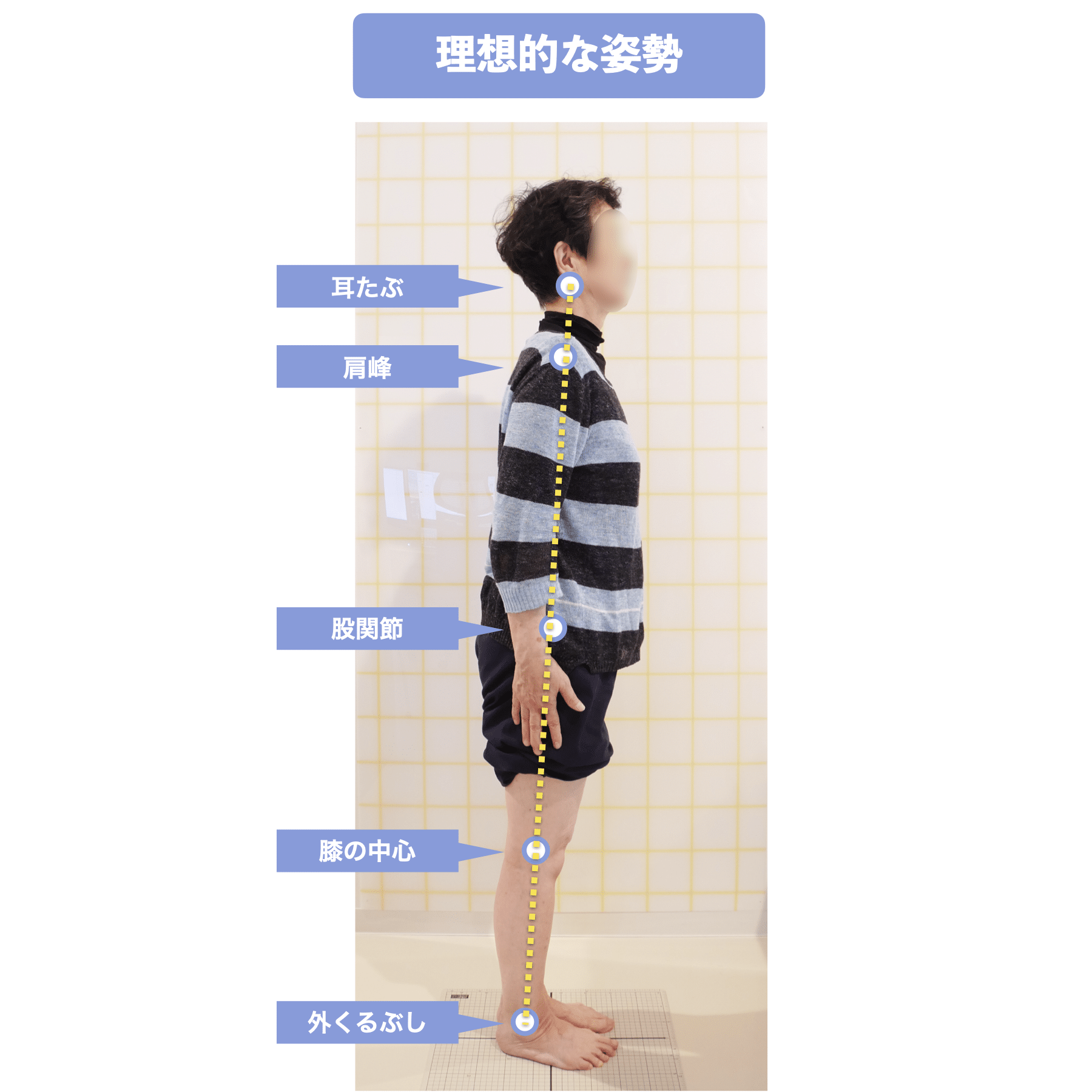
その次に、耳垂(耳たぶ)と足の外果(外くるぶし)を線で結びます。その直線の中に、①膝の中心、②大転子(股関節)、③肩峰(肩の中心)が通っていれば理想姿勢です。理想姿勢であれば、首の骨のカーブも正常なカーブを描いています。線を引くのが面倒であれば、定規などを耳たぶと外くるぶしの位置に合わせます。
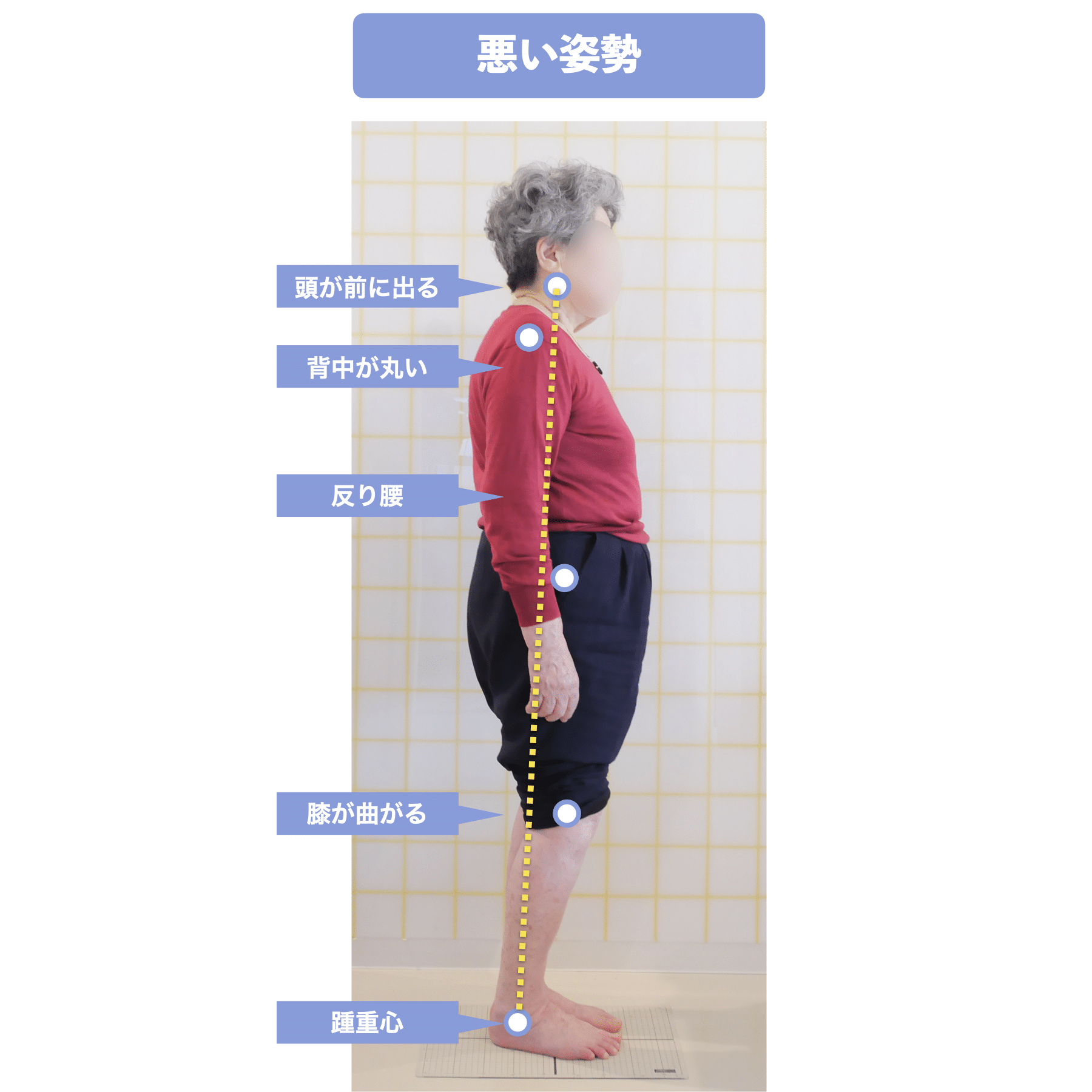
①・②・③のいずれかが直線からズレている場合は、猫背か反り腰の状態で、首を前に出して立っている状態だと思います(反り腰の一部の方を除く)。この場合、首の骨がストレートネックになっている可能性が高いです。理想点からずれていた人は、次の首の角度チェックに進みましょう。
ストレートネックの進行度
次に真横から「顔〜肩」が入るように撮影してみましょう。顔は真正面を向いて自然体で立っておきます。もしくは先ほど撮影した姿勢の写真を拡大しても良いですね。

耳たぶと肩の中心を線で結んでみましょう。垂直線に対してどれくらい傾いているかを測ります。頚椎角が0°であれば正常、15°以上でストレートネックが起こりやすくなります。正確に頚椎角を知りたいという方は、全身写真から割り出していきますが、これは姿勢分析の記事で紹介していきたいと思います。
治療
病院での治療は、主に「生活指導」を基本として、「食事療法」「運動療法」「物理療法」「薬物療法」を組み合わせて行います。ストレートネックが重症化して頸椎ヘルニアになると、最終的に手術が必要になる場合もあります。
いずれも第一の目的は根治ではなく、ストレートネックによる首や肩の痛みを緩和する事なので、疼痛緩和には一時的な効果はあります。また、手術をしても正しい姿勢ではない限り、さらに姿勢が崩れて再発を繰り返すことになります。ストレートネックを根本的に解決し、再発をしないようにするためにはセルフケアによる足ゆびストレッチがお勧めです。それに合わせて正しい靴の選び方、靴の中で足が滑らないようにするための正しい靴下選びも大切です。
セルフケア
ストレートネックを解消するには、足元を正し、人間本来の正しい姿勢を取り戻すことが有効です。1日1回は足指のストレッチをするようにしましょう。足指の体操ですが、実際には姿勢が良くなり、肩甲骨まわりの筋肉をほぐさなくても、自然と筋肉が柔らかくなっていきます。
ストレートネックを改善する足指ストレッチ「ひろのば体操」
1日1回5分を目安にやってみましょう。2〜3日やってみて症状に変化が見られないときは、1日2〜3回に回数を増やしてみることをお勧めします。目標は足指のパーが30秒間できるようになることです。
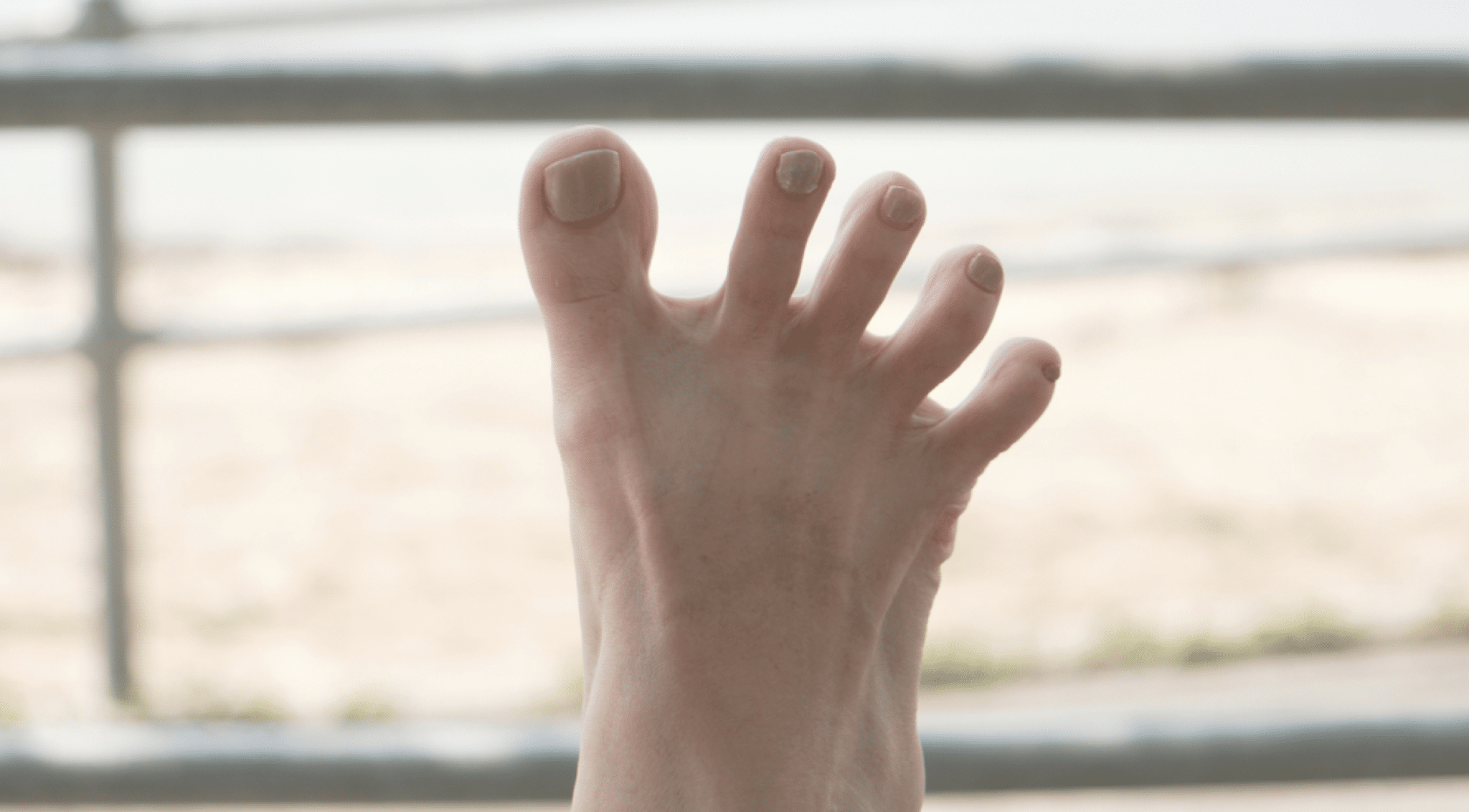
猫背やストレートネックを最適にサポートする矯正5本指靴下
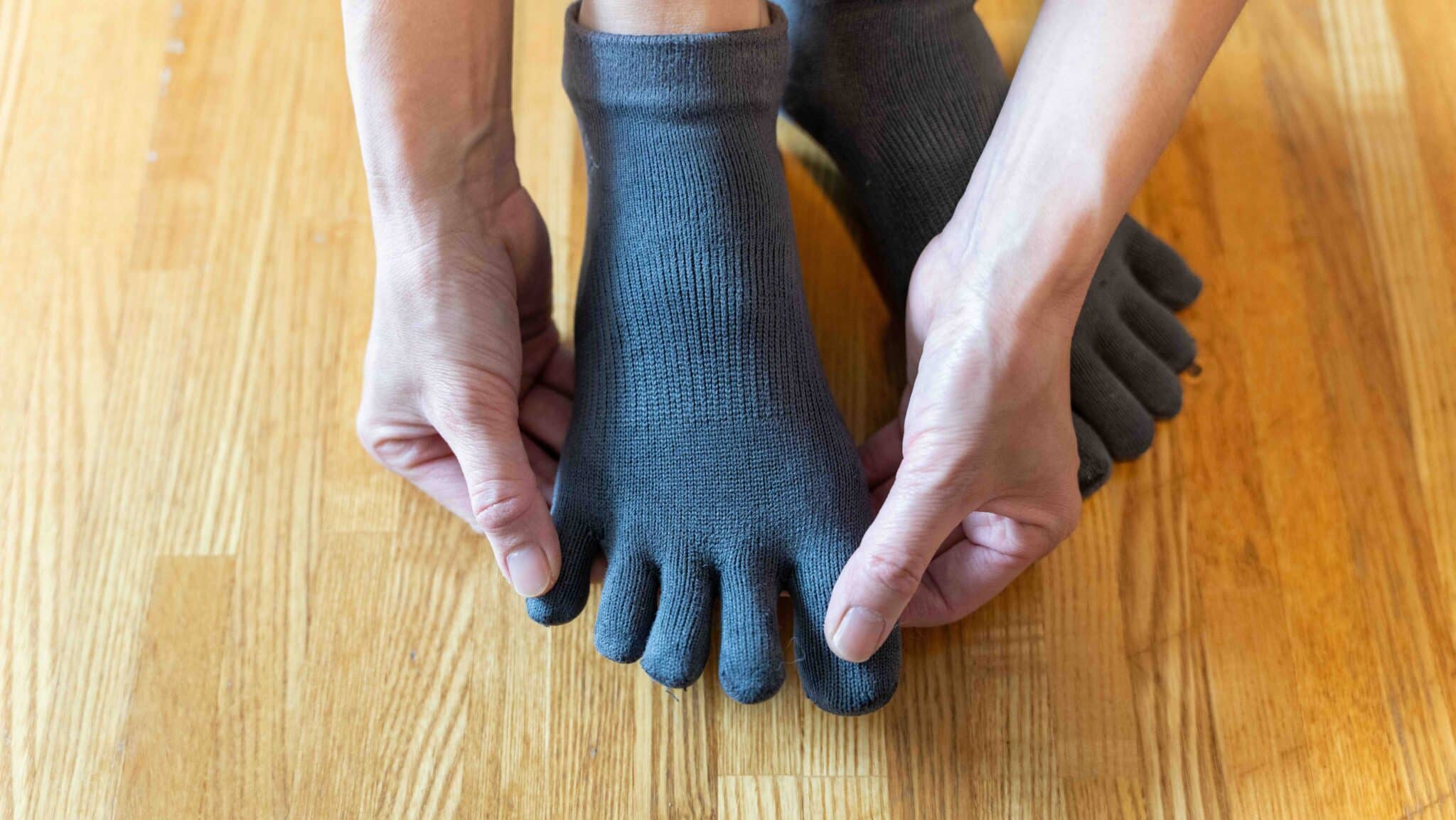
これまで綿やシルクで機能性5本指靴下を製作し、臨床現場で多くの患者様に試してきましたが、靴や靴下の中で足が滑るという問題を解決することができませんでした。そこで、繊維会社と2年の歳月をかけて理想的な繊維を完成させ、矯正5本指靴下「YOSHIRO SOCKS」が誕生しました。猫背でストレートネックに悩んでいる方は、試してみてください。
より効果的にするために
足指ストレッチや矯正5本指靴下(YOSHIRO SOCKS)を履きながら、日常生活を少し変えることで、姿勢を正しい状態で保持し、ストレートネックを改善させることができます。
・小股で歩くようにする
・坂道や階段を上るなど足指先を使う活動を行う
・室内で履き物を履かないようにする
・1日6,000歩以上歩くように心がける
・靴紐をしっかり絞めるようにする
・オーダーの枕やマットを使わないようにする
・正しい靴選びを心がける
・靴べらを使って靴を履くようにする
足指のストレッチや矯正5本指靴下(YOSHIRO SOCKS)を履いて歩くことで、足指を機能的に使うことができます。①足指変形が改善→②正しい重心位置→③姿勢が改善→④ストレートネックが解消という流れです。ストレートネックによるさまざまな症状を気にすることがなくなり、アクティブに活動できるようになります。
予防
同じ姿勢を長く続けない
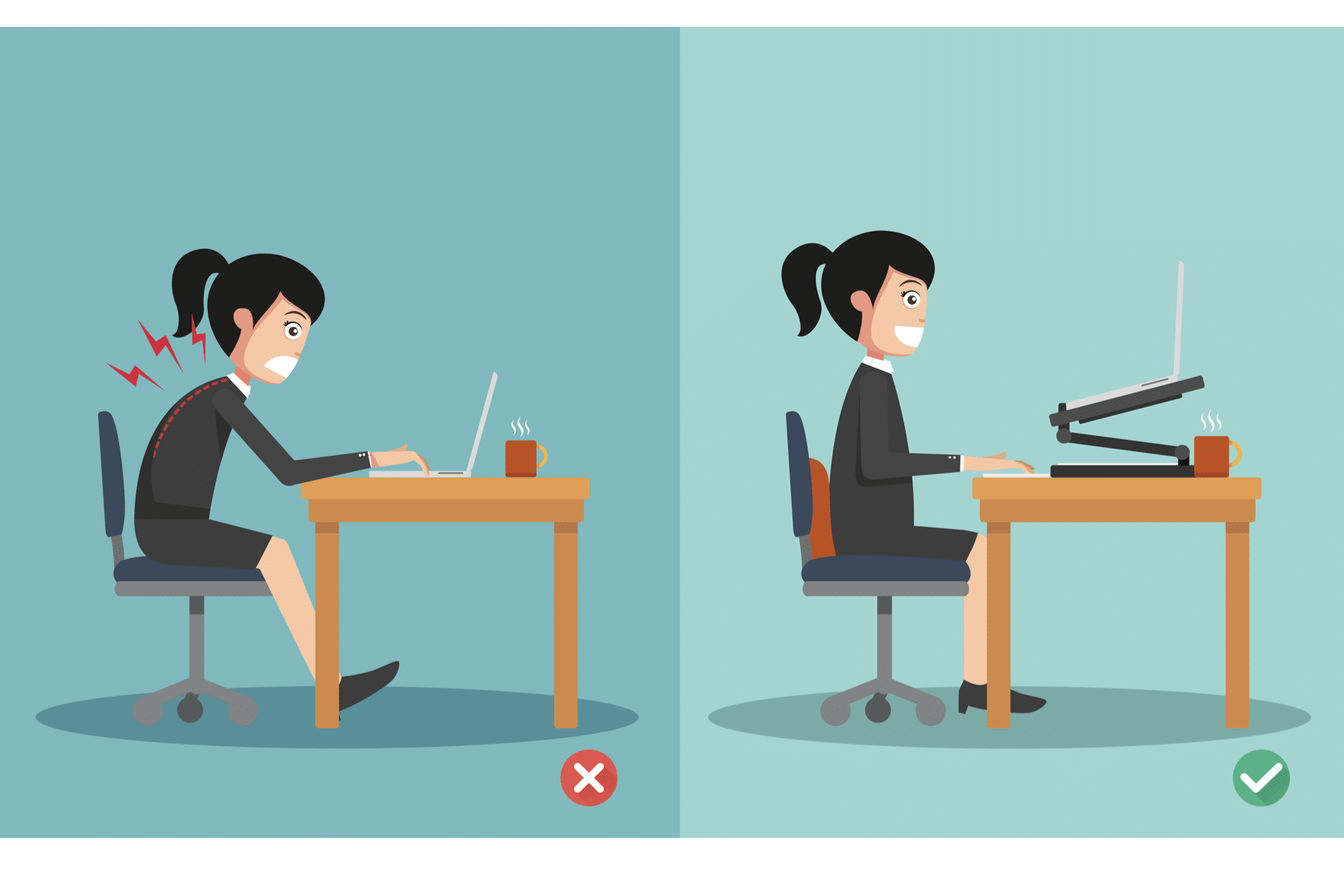
デスクワークなどで作業に集中していると、頭を前に出して肩周囲の筋肉に負担をかけた姿勢のまま長時間過ごしてしまいがちに。長時間同じ姿勢でいると、血行が悪くなることで疲労物質が蓄積されて肩こりや首こりを招いてしまいます。30分に1回程度は、体を動かすように意識してみましょう。人間工学に基づいた椅子に変えたり、モニターの位置を気をつけることでも、肩こりや首こりは随分と軽減されていきます。
目を休ませる
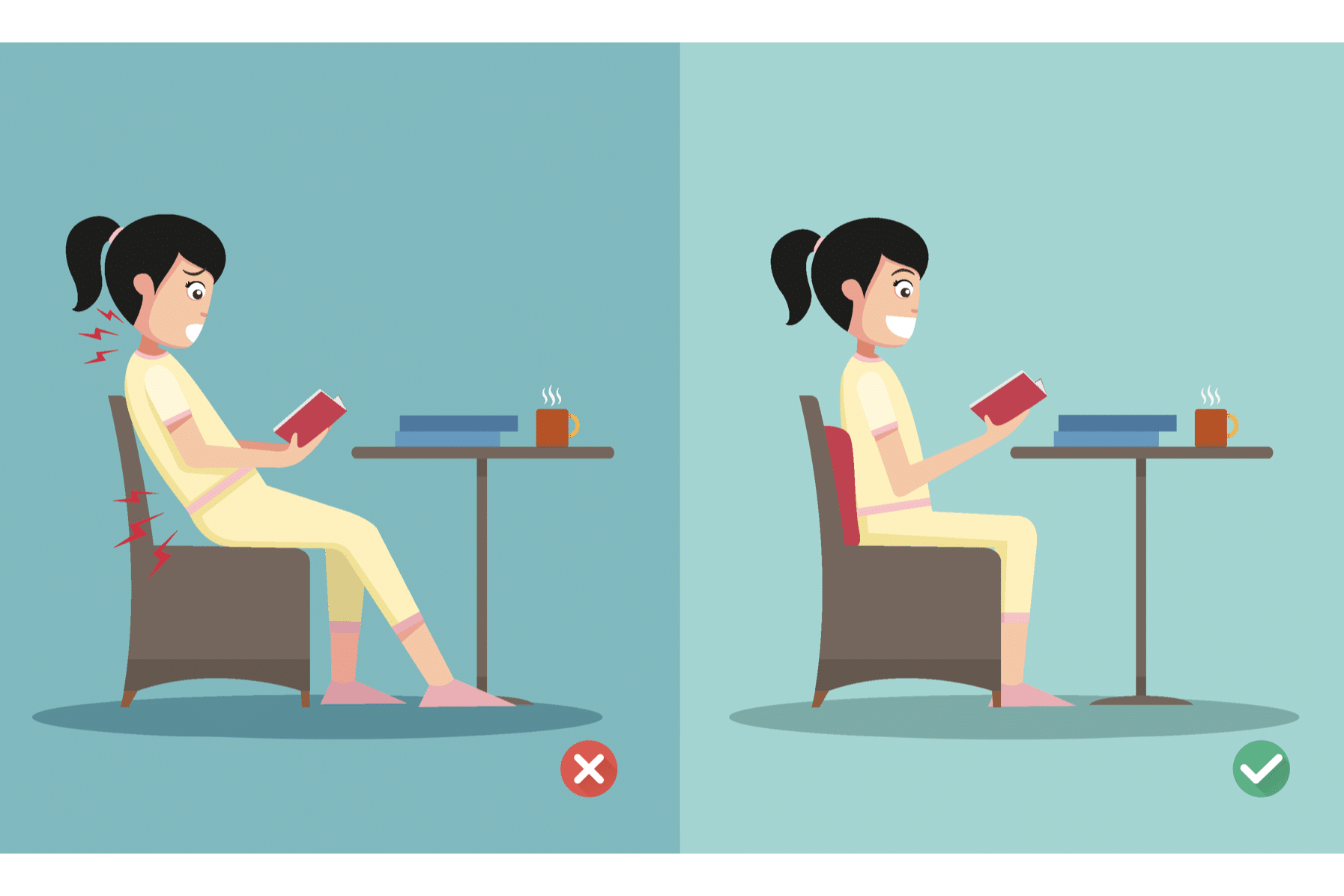
長時間の読書・パソコン・スマホの使用などは、肩こりや首こりだけでなく頭痛や倦怠感など、さまざまな不調を招く要因になります。目の負担がかかる作業をするときには、適度に目を休ませるようにしましょう。目の疲れを感じたら、遠くを見たり、目のストレッチを取り入れると良いです。また部屋の明るさや、読書・パソコン・スマホの姿勢にも気をつけてみてください。
適度な運動や体操をする
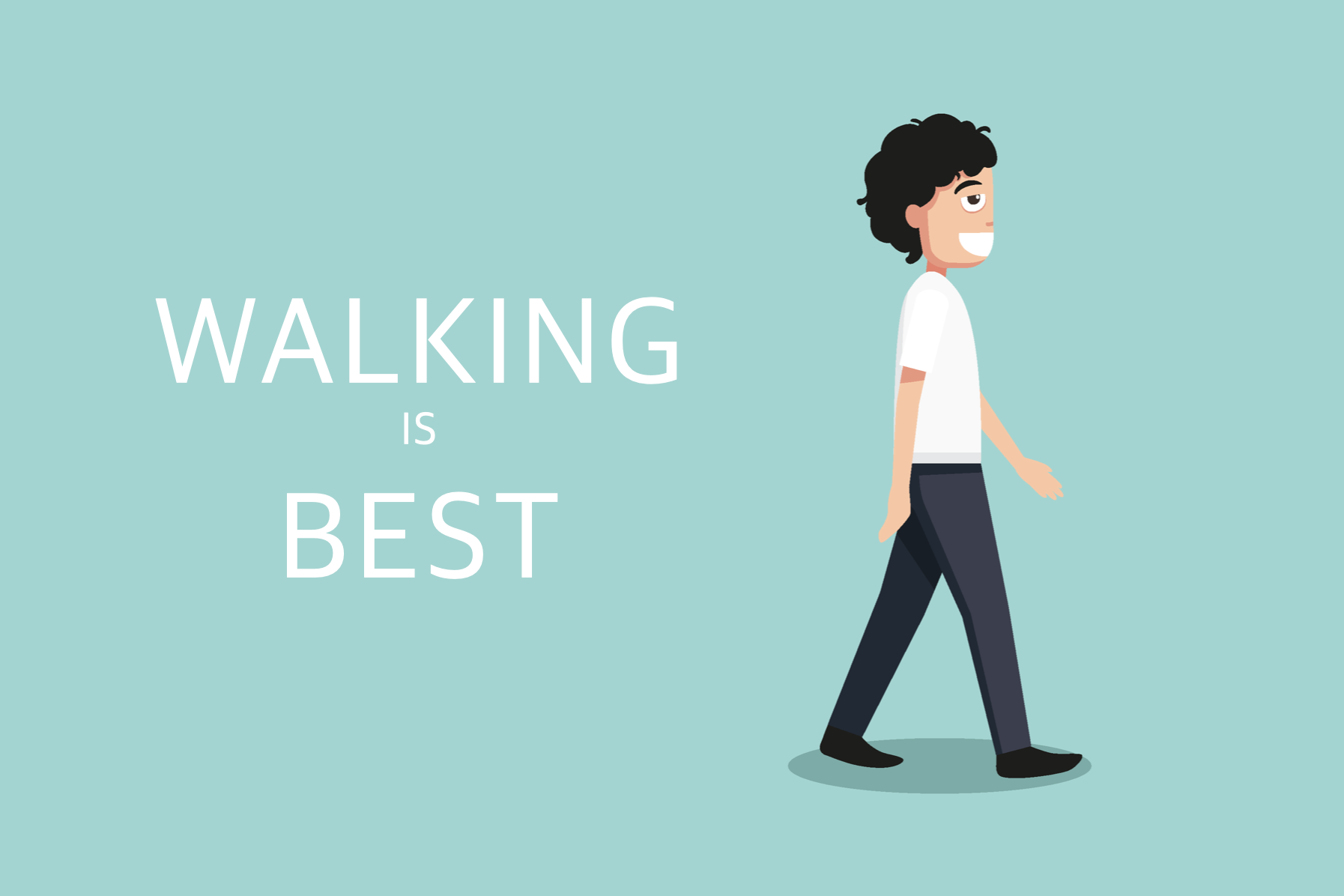
正しい姿勢は、正しい筋肉によって作られていきます。正しい筋肉は「足指を広げて伸ばした状態」で歩くことでしか作ることができません。そして1日6,000歩以上が望ましく、それ以下であると思うように筋肉がつきません。1日10,000歩を目指してウォーキングを頑張ってみましょう。
正しい靴の選び方
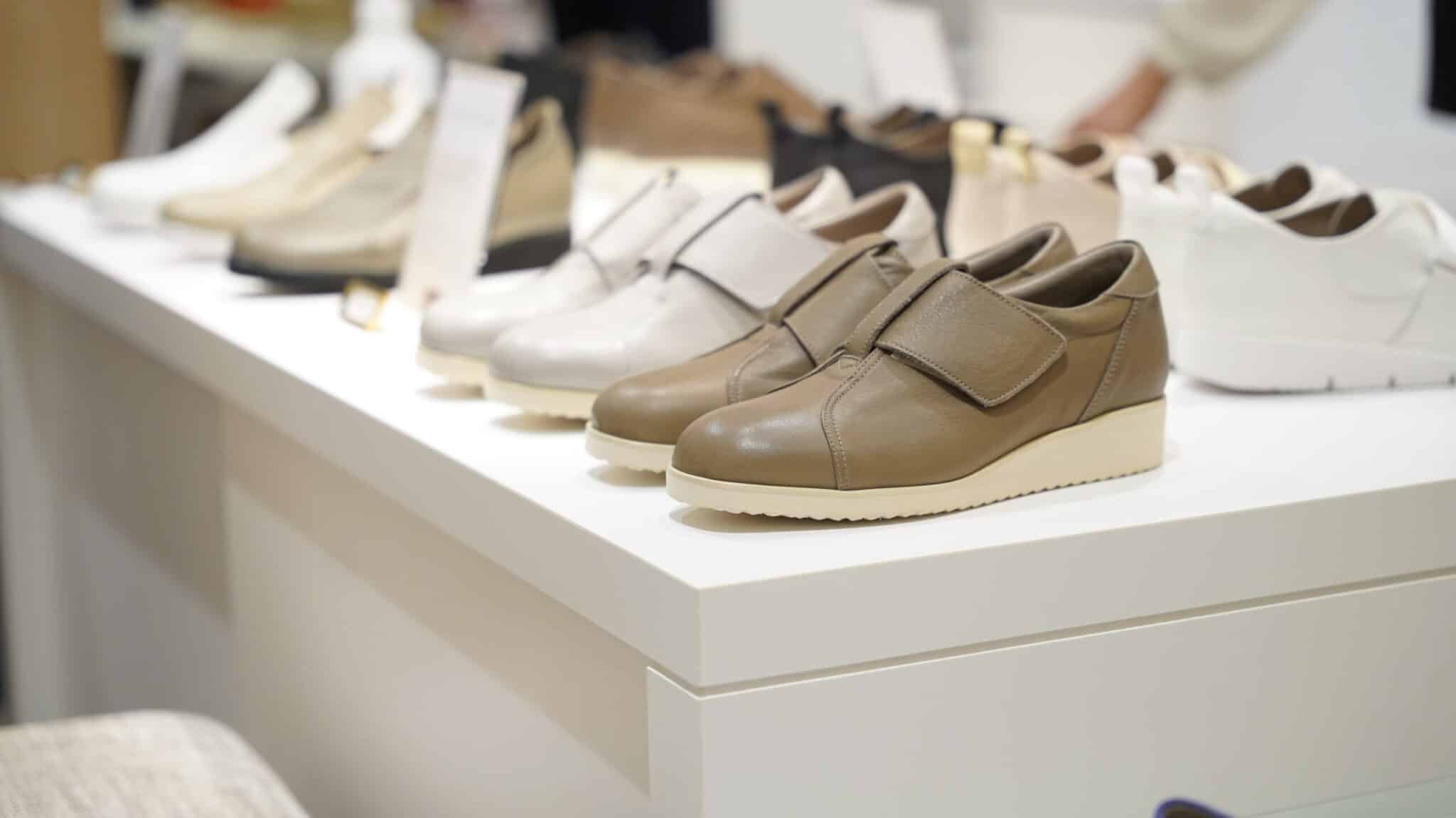
足指が変形するいちばんの原因は、靴の選び方と履き方にあります。ストレートネックの多くは、足の指をちゃんと使っていないことが原因です。足と肩は遠く離れた場所にあるので、ピンとくる人は少ないと思います。「風が吹けば桶屋が儲かる」ではないですが、足先から頭までカラダは全てつながっているので、ストレートネックで悩まれている方はこの機会に足元を見直してみてください。
正しい靴下の選び方
純綿やシルク素材のものは滑りやすい
シルケット加工(またはマーセライズ加工)というものがあります。シルケット加工とは、シルクの様な光沢を持たせる加工のことで、糸を苛性ソーダ(水酸化ナトリウム)の液に浸し、手延べうどんのように糸を伸ばして糸の断面を整える加工のこと。主に綿やシルク繊維(コットン)に対して加工をすることが圧倒的に多いです。
綿の断面が整い発色性もよくなり、加工をすると毛羽も抑えられるため、見た目に高級感があります。なめらかですべるような履き心地なのですが、なめらか(滑らか)ですべる(滑る)というように読んで字が如く、靴の中や靴下の中で足が滑りやすくなります。つまりは足指の変形を起こしやすい素材ということなのです。
もちろんシルケット加工をしていない綿やシルク素材もありますので、そういった素材を選ぶこともひざ痛の予防には大切な要素です。
5本指靴下で足指の機能を発揮させる
一般的な靴下はチューブソックスとも呼ばれ、世界中の方のほとんどがこのタイプの靴下です。長年使われてきた形状なのですが、チューブタイプは足指をうまく使うことができなくなります。そのため5本に分かれた靴下が良いのですが、このタイプにも色々なものがあります。
一番大切にしたいのは、自分自身の足にジャストフィットするか。指先や甲まわりがゆるかったりすると、せっかくの5本指靴下でも「滑り」が発生してしまいます。逆にフィットしすぎて圧迫感を感じる5本指靴下も血行を妨げてしまうためオススメできません。自分が使ってみて「心地よい」と感じる5本指靴下を見つけることが大切です。
矯正力のある靴下も増えてきましたが、試してみると意外にも強力に圧迫するものが多いと思いました。特に土踏まずの部分。アーチをサポートすることは大切なのですが、アーチ構造というのは強く持ち上げすぎると機能を失ってしまう特性があるので、アーチ部分もあまり圧迫感がないものを選ぶようにしましょう。
脱いだ時に「は〜、スッキリした!」と感じたら圧迫が強いということになります。
体験談
実は、娘はずっとネコ背にコンプレックスを持っていました。緊張しやすい性質も、肩をすぼめてしまう原因だったと思います。ところが逆に、姿勢が悪いと生意気なように見られることがあり、学校の先生から注意を受けたりもしていました。姿勢を矯正する整体院に通わせましたが、1年半続けてもいっこうによくなりません。
思い余った私は、新聞の連載で知った湯浅先生のところに娘を連れていきました。そのとき先生から、ひろのば体操を教えていただいたのです。それから娘は、入浴中と寝る前に毎日、この体操を行うようになりました。足指の間に手の浅く指を浅くはさんで、片足20回ずつゆっくりと伸ばします。娘は、姿勢がよくなりたい一心で、東京で研修中も、このひろのば体操を続けていたのです。
湯浅先生によれば、足指が地面についていないと、姿勢が悪くなり、ネコ背になったりするそうです。ですから、姿勢をよくするには、まず足指をしっかり広げて伸ばすことが大事とのこと。靴の履き方も指導され、足をスポッと入れるだけの履き物はよくないことも教えていただきました。そこで、かかとのない靴は思い切って捨て、紐を結ぶスニーカーしか履かないようにしました。
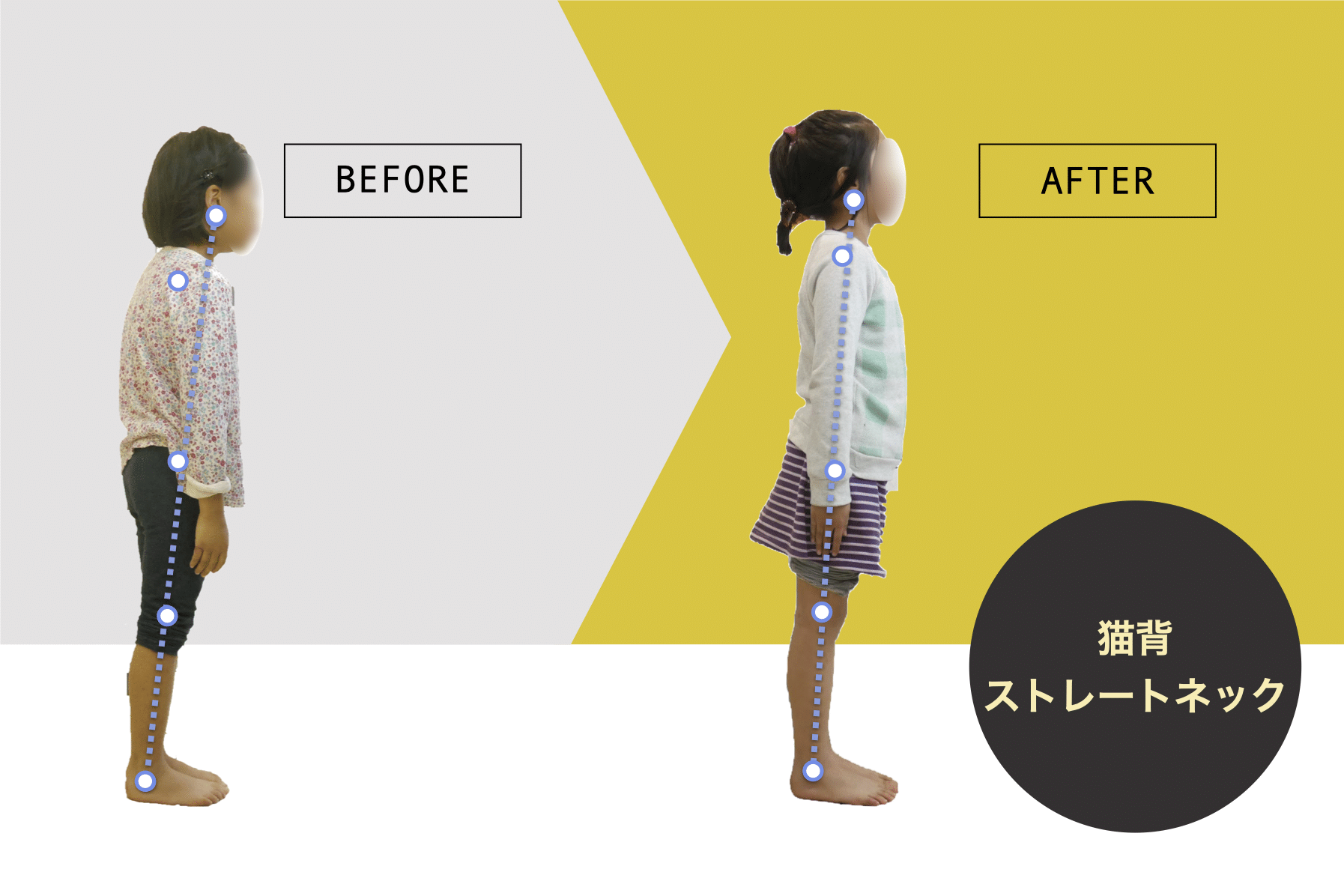
娘は、足の小指の浮き指が原因で姿勢が悪かったようです。ひろのば体操で、今は浮き指がすっかり直り、小指がぴったり床についています。また、足指が伸びて地面に指がつくようになると、運動能力も高まるそうです。実際、姿勢がよくなって自信をつけた娘は、研修旅行の後に、ダンスを習い始めました。
もともとは運動の苦手な子でしたが、今は、背中のほうに挙げた片足のつま先をつかむ姿勢なども、難なくこなせるようになりました。食事中も自然と背すじが伸びているので、品がよく見えます。姿勢だけでなく、顔の印象も変わりました。口元の左右のバランスがよくなり、ちょっと笑うときにも、印象がよくなったと思います。足指がしっかり伸びると、姿勢や顔まで変わってくるんですね。娘の変化を見ながら、足指のたいせつさがわかりました。
参考文献
1. 外反母趾の機能解剖学的病態把握と理学療法.湯浅慶朗.理学療法 第31巻 第2号 2014.2 P159-165
2.『足指をそらすと健康になる』湯浅慶朗/著 PHP研究所 2014.6
3.『たった5分の「足指つかみ」で腰も背中も一生まがらない!』湯浅慶朗/著 PHP研究所 2021.6
4.Donnally III C, Hanna A, Odom CK. Cervical Myelopathy (https://www.statpearls.com/ArticleLibrary/viewarticle/25450). [Updated 2021 July 24]. In: StatPearls [Internet]. Treasure Island (FL): StatPearls Publishing; 2021 Jan-. Accessed 4/20/2022.
5.Pal GP, Sherk HH. The vertical stability of the cervical spine. Spine (Phila Pa 1976) 1988;13:447-9. [Crossref] [PubMed]
6.Gadia A, Shah K, Nene A. Cervical Kyphosis (https://www.ncbi.nlm.nih.gov/pmc/articles/PMC6365778/). Asian Spine J. 2019;13(1):163-172. Accessed 4/20/2022.
7.Ogura Y, Dimar JR, Djurasovic M, Carreon LY. Etiology and treatment of cervical kyphosis: state of the art review—a narrative review (https://www.ncbi.nlm.nih.gov/pmc/articles/PMC8511555/). J Spine Surg. 2021;7(3):422-433. Accessed 4/20/2022.
8.Scheer JK, Tang JA, Smith JS, et al. Cervical spine alignment, sagittal deformity, and clinical implications: a review (https://thejns.org/spine/view/journals/j-neurosurg-spine/19/2/article-p141.xml). J Neurosurg Spine. 2013;19(2):141-159. Accessed 4/20/2022.
9.Wickstrom BM, Oakley PA, Harrison DE. Non-surgical relief of cervical radiculopathy through reduction of forward head posture and restoration of cervical lordosis: a case report (https://www.jstage.jst.go.jp/article/jpts/29/8/29_jpts-2017-097/_pdf/-char/ja). J Phys Ther Sci. 2017;29(8):1472-1474. Accessed 4/20/2022.
10.Yeh JS, Sgouros S, Walsh AR, et al. Spinal sagittal malalignment following surgery for primary intramedullary tumours in children. Pediatr Neurosurg 2001;35:318-24. [Crossref] [PubMed]
11.Langeloo DD, Journee HL, Pavlov PW, et al. Cervical osteotomy in ankylosing spondylitis: evaluation of new developments. Eur Spine J 2006;15:493-500. [Crossref] [PubMed]
12.Gillis CC, Kaszuba MC, Traynelis VC. Cervical radiographic parameters in 1- and 2-level anterior cervical discectomy and fusion. J Neurosurg Spine 2016;25:421-9. [Crossref] [PubMed]
13.Shamji MF, Mohanty C, Massicotte EM, et al. The Association of Cervical Spine Alignment with Neurologic Recovery in a Prospective Cohort of Patients with Surgical Myelopathy: Analysis of a Series of 124 Cases. World Neurosurg 2016;86:112-9. [Crossref] [PubMed]
